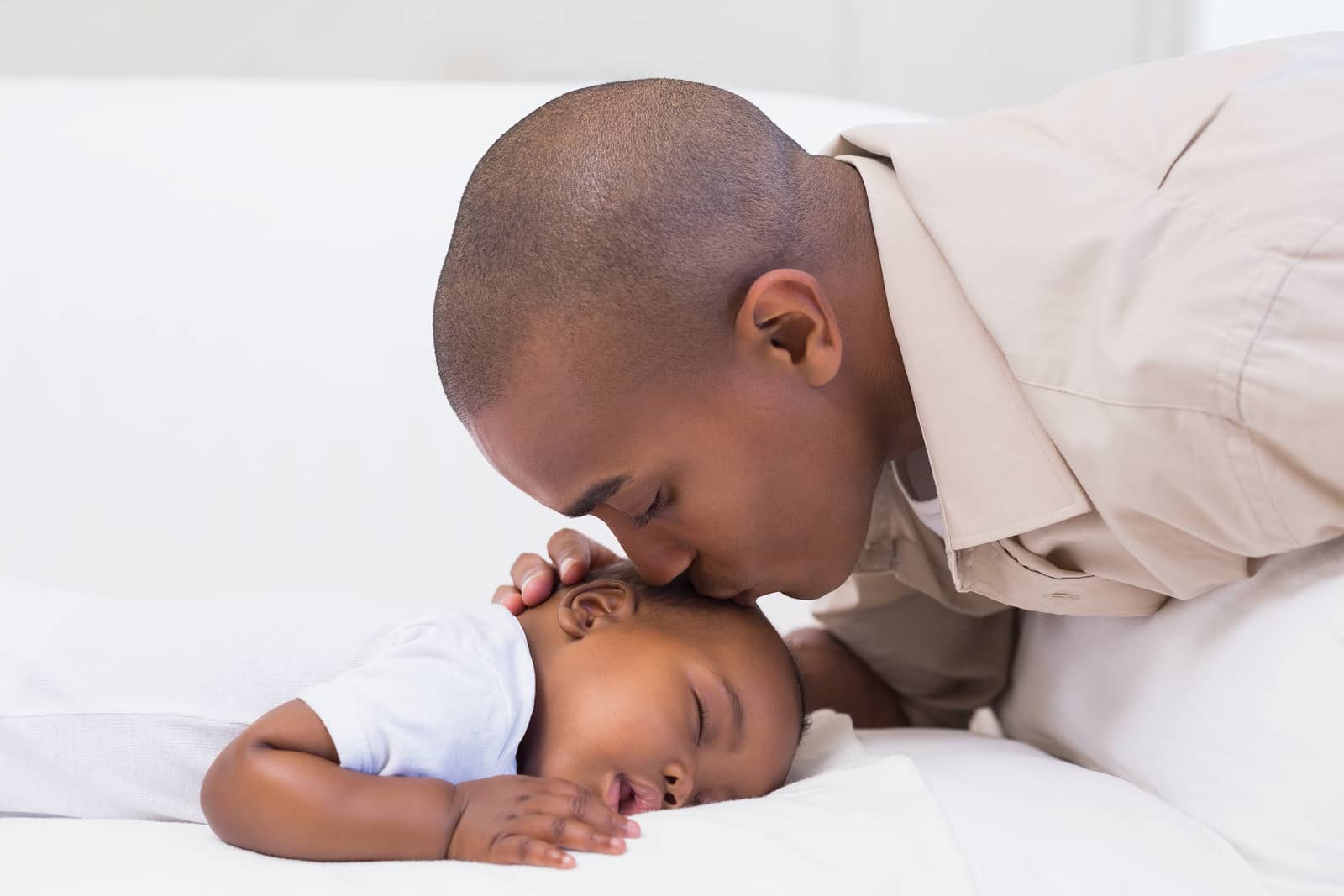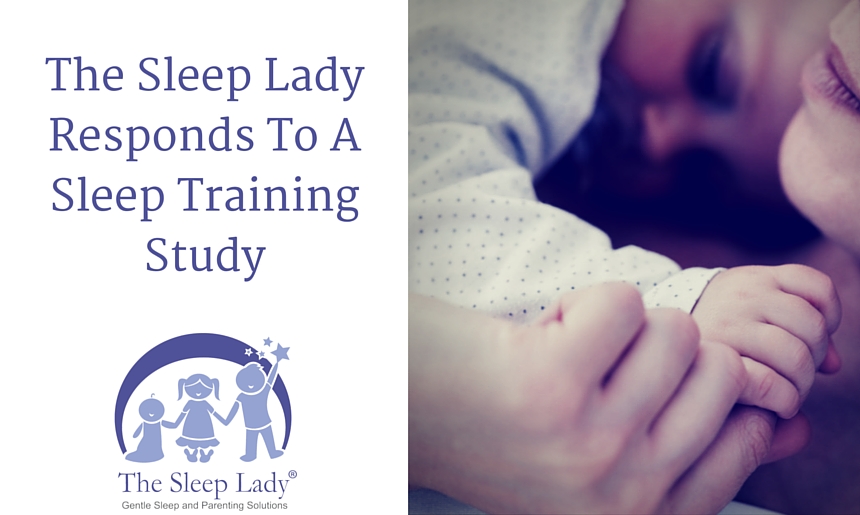You may wonder, does it really matter which sleep training method you use with your child or will they learn to go to sleep on their own eventually? Will any method harm a child’s psyche or ability to attach? This discussion is ongoing among those who study and write about sleep training methods as well as among parents of babies the world over.
A recent sleep trial of only 43 children from Australia was designed to answer these kinds of questions. The researchers sought to evaluate short-term stress, potential effects on attachment over a year, and the sleep/wakefulness of infants who underwent two different sleep training methods.
Before we look at what this study brings to the sleep training discussion I want to review the 4 main sleep training methods. Their distinctions are briefly highlighted below.
- Controlled Crying or Graduated Extinction – In this method, popularly associated with Dr. Richard Ferber, a baby is put to bed and allowed to cry but the parent checks in on baby in ever-expanding timed checks (in 2 minutes, in 4 minutes, in 6 minutes etc. on the first night and in increasing intervals each subsequent day). One-third of the subjects in the study did graduated extinction.
- Cry It Out or Extinction – Dr. Weissbluth popularized this method in which the baby is put in bed and allowed to cry with little to no parental involvement. This method tends to work fairly quickly but can be difficult for many parents to actually do because of the intense crying.
- “No Cry” Method – There is no way to actually avoid all crying at bedtime, but this method has the parent snuggle, rock, or feed the baby till super drowsy. If he rouses from sleep you are to immediately comfort, soothe, and repeat until baby sleeps soundly. Dr. Sears, a proponent of this method, says that this kind of intentional parental intervention is to be continued as long as the child seems to need it and that it will lead to strong parent-child attachment.
- Fading – This method involves camping out (i.e. staying near the child while he learns to go to sleep) to give verbal and physical reassurance that is slowly reduced as the parent moves away and the child begins to learn the skill of putting themselves to sleep and back to sleep.

The Sleep Lady Shuffle is a Type of Fading
My gentle method fits into the fading category because I advocate starting out sitting in a chair near the child’s crib (camping out) and slowly moving further away over a period of two weeks.
I teach you to give verbal assurance to the child as well as physical touch (patting and pick up to calm for example). If your baby cries hysterically I want you to pick him up and comfort him till he is calm (not asleep) and then place him back in his crib and reassure him from your chair.
I developed this method 20 years ago as an alternative to the methods available when I was raising my daughters because I wanted to provide attentive support and help children gain confidence in their own developing sleep skills. I could not bear to leave them to cry it out but I also did not want to do everything for them; when you do The Shuffle you are coaching your baby to learn how to soothe himself to sleep and back to sleep when your baby or child wakes during the night.
What These Methods Have In Common
These 4 main sleep training methods do share a few things in common: each involves some crying, the instilling of positive sleep associations, and the desire to remove some or all sleep crutches. Of course the methods do vary significantly in terms of how much intervention a parent does, how much fussing or crying is “allowed”, how present the parent is with baby while he is going to sleep and how the parent responds to night wakings.
What I Believe Is Most Essential
Parents should choose the method that:
- best aligns with their parenting values and beliefs
- is the best match for their child’s temperament
- and the method they can follow thru with consistently.
If you do not feel comfortable with a particular method then, when the going gets tough, you are much more likely to quit or respond inconsistently. This will tend to confuse the child and create more crying. . Then you are back to the proverbial “square one” or even possibly in a negative position in terms of training your child to cry! It is so important to find the method that fits your family and then commit to it.
A Few Notes From The Sleep Lady: I do not support sleep training of newborns or babies under 4 months of age. Babies between 4-6 months of age should be closely evaluated for their readiness. Night weaning is not a necessary part of successful sleep coaching either!
Two Methods Compared in the Australian Study ~ The Nitty Gritty
The new study recently published in Pediatrics compares two sleep methods that they term graduated extinction and bedtime fading alongside a control group of babies (in which no intervention was made at bedtime; parents received sleep education instead). The children were ages 6-16 months.
Both groups that had bedtime interventions (sleep training) enjoyed getting to sleep earlier than the control group. The study states that the children had no measurable adverse stress long-term (what was long term?). Stress or cortisol was not measured during sleep training at night, however. It was measured in the morning and in the afternoon.

The study also reports no negative attachment responses long-term, which in this study is 12 months. However, parents were asked to self-report on their child instead of having objective measurable data taken before and after the sleep training.
In short, the study finds that both sleep training methods utilized improved sleep latency (how long it takes to get to sleep) over the control group and neither of the methods created behavior or attachment problems for the child.
A Different Kind of Fading
The study followed strict instructions for the graduated extinction and bedtime fading groups, but it is important to note that the method they termed bedtime fading is actually quite different than what most behaviorists mean by fading.
In this study, bedtime fading is defined as setting a firm wake up time (say 7 a.m.) and pushing the normal bedtime later at night by 15 minutes every few days until the baby no longer struggles significantly to go to sleep. Because his “sleep pressure” is built up the child will begin to fall asleep on his own.
Unfortunately, the baby also gets less total sleep at night. This kind of fading, however, is not similar to The Shuffle nor camping out. It’s also important to note that no instructions were given to the families on how to address or respond to any nighttime wakings. Nor were naps mentioned in the study, and they are very important to nighttime sleep!
In contrast, with The Sleep Lady Shuffle parents have clear goals and steps to take in how to respond to each waking. Not only is your child learning how to put themselves to sleep at bedtime but also back to sleep during the night (any required night feedings are not included in this of course).
This study said that the night wakings did not improve, which is probably because parents were not given any directives on how to respond and if they continued to put their child back to sleep at each night waking then it would make sense that the child would continue to wake during the night.

Sleep Training Works
The study’s findings are not surprising to me. Any of the 4 sleep training methods will work if there are no underlying medical conditions and the method is consistently followed. In other words, sleep training, when done responsibly and thoughtfully, will work for your child.
Try Sleep Shaping, NOT Sleep Training Before 6 Months
It is important to note that the study did not do sleep training for babies younger than 6 months.
Trust Your Instincts
When considering which sleep training style to use, I think you should look at your own personalities, parenting style, beliefs, as well as your baby’s temperament. I find that most babies (and parents!) are suited to a gentle, gradual method in which crying is minimized and verbal and physical support is integral.
My method of sleep coaching helps your baby slowly adjust to a change in routine over time instead of being put in bed one night all alone and confused about the sudden change. That being said, every once in a while a parent and child seem suited to graduated extinction. Again, find the method that suits your style and stick with it consistently. If you just aren’t sure what method is best for you and your child it can’t hurt to start off gradual.
One Caveat
My one caveat to this is that if you have tried a single method like extinction or graduated extinction (or another method consistently) for 3-5 days with no progress at all, then please stop. Speak with your pediatrician about any potential underlying medical concerns and your child’s physical readiness for sleep training.




